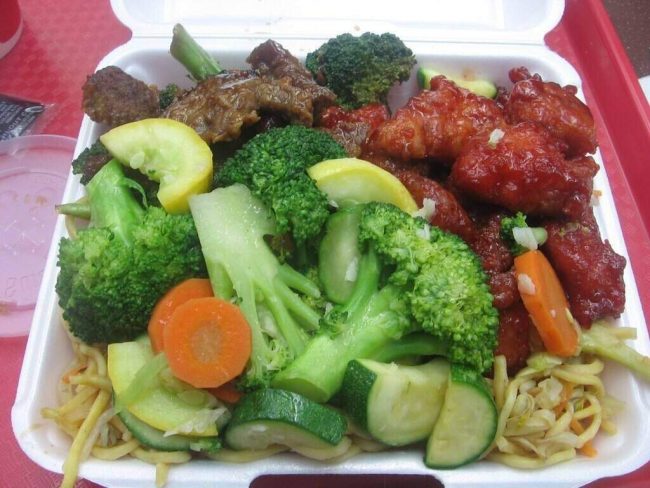|
Getting your Trinity Audio player ready...
|

Inflation is not only hitting Americans at the pump, it’s also causing rent hikes and food insecurities. The COVID-19 pandemic created a pang in people’s pockets when businesses closed down or reduced their employee numbers. Local food pantries are feeling the sting as they struggle to keep up with the communities needs.
The job market has gotten a little better as the pandemic released some of its hold on the world. Now the rising prices of everything are causing major concerns. People who never had to struggle between paying the bills or purchasing food for the house are now feeling that burden.
Inflation has caused the cost of food to rise 10.4% from last year’s prices. That is the largest 12-month increase since 1981.
Food Prices
With food prices rising the level of food donations has decreased. Last month roughly 25 million people struggled with not having enough to eat, according to data from the Census Bureau. That’s the greatest number since just prior to Christmas 2020. At that time the COVID-19 pandemic had caused the unemployment rate to be twice as high as it is today and really took a bite out of the economy.

In 2021, the Urban Institute conducted a survey that revealed changes in household food security among adults ages 18 to 64 between the time of March/April 2020 to June/July 2022.
In 2013, the Health Reform Monitoring Survey (HRMS) a nationally representative, internet-based survey of nonelderly adults was launched to provide timely information on the Affordable Care Act (ACA) before intelligence from federal surveys becomes available. Core funding for the HRMS is provided by the Robert Wood Johnson Foundation.
Data collected by the HRMS is used by the Urban Institute’s Health Policy Center when they produce fact sheets, policy briefs, journal articles, and blog posts. The Urban Institute collaborates with the Inter-university Consortium for Political and Social Research (ICPSR) at the University of Michigan to make HRMS information available for public use through the Robert Wood Johnson Foundation’s Health and Medical Care Archive on the ICPSR website.
Food Security Survey
One of the surveys they conducted found that in March/April of 2020, they found that 69.5% of 9,032 adults had high food security. They also established of those individuals 8.9% had marginal food security with 21.6% having food insecurity.
One year later they surveyed 9,067 adults. The data they collected stated that 76.5% of those individuals had high food security, 8.3% had marginal food security, and 15.3% experienced food insecurity.
HRMS conducted the same survey for the June/July 2022 time period. Out of 9,494 adults, 69.2% had high food security, 9.5% experienced marginal food security and 21.4% had food insecurity.
Food insecurities can be influenced by a number of factors including race/ethnicity, employment, income, and disability. The United States Department of Agriculture (USDA) defines food insecurities as “the condition assessed in the food security survey and represented in USDA food security reports—is a household-level economic and social condition of limited or uncertain access to adequate food.”

Category
There are two categories of food insecurity. The first one is low food security which is reports of reduced variety, quality, or desirability of diet. No or little indication of reduced food intake. Next is very low food security which reports multiple indications of reduced food intake and disrupted eating patterns.
Food security can become threatened when money to purchase sustenance for the household is not available or limited. Inflation and unemployment can negatively affect a household’s food security.
Neighborhood conditions may affect people’s access to food. For example, individuals living in some low-income communities, rural areas, and urban neighborhoods may have limited access to grocery stores, farmers’ markets, or full-service supermarkets.
Supermarkets
Ethnic and racial disparities exist related to food insecurity. Predominantly white neighborhoods have more full-service supermarkets than predominantly Black and Hispanic communities.
Neighborhoods that lack nutritious and affordable food are commonly known as “food deserts.” Small independent shops and convenience stores are more common in food deserts than grocery stores or supermarkets.
Studies show that programs like Supplemental National Assistance Program (SNAP), WIC (Women, Infants, and Children) program, and the National School Lunch Program (NSLP) may help add some food security. However, more research is needed to understand food insecurity and its influence on disparities and health outcomes.

Inflation Causes Food Security Issues
Inflation is causing the price of food to increase. For example, cereal now cost 15% more than it did last year and egg prices have increased 33%. This bout of inflation can be due to several things:
- The COVID-19 pandemic. When the virus first struck stay at home mandates caused many businesses and restaurants to shut down. With people eating at home more often, grocery stores began to struggle to keep shelves stocked. In turn, this put pressure on those who supplied the store (both production-wise and drivers).
- Russia’s invasion of Ukraine. The largest producers of wheat in the world come from Ukraine and Russia — 30% of all wheat exports combined. The war caused Ukraine to be unable to fulfill its role as a major producer.
- Soaring energy prices. The war on Ukraine caused many Western Countries to implement bans on Russian oil, thus causing high gas and oil prices. From June 2021 to June 2022 energy prices rose 41.6%. These high prices exacerbated the already-high food production and transportation costs that the pandemic triggered.
Recently, Ukraine sent out a shipment of wheat and President Joe Biden stated he was going to tap into an oil reserve. Many are hopeful that inflation prices will soon drop down to a more affordable area.
Written by Sheena Robertson
Sources:
USDA: Definitions of Food Security
The New York Times: Inflation Soared in June, Pinching Consumers and Challenging Policymakers
Forbes: Why Are Food Prices Rising?
The New York Times: More Americans Are Going Hungry, and It Costs More to Feed Them
The Urban Institute: Health Reform Monitoring Survey
Healthy People: Food Insecurity
Top and Featured Image Courtesy of Matt’s Flickr Page – Creative Commons License
First Inset Image Courtesy of ☼☼Jo Zimny Photos☼☼’s Flickr Page – Creative Commons License
Second Inset Image of Lynda Giddens’ Flickr Page – Creative Commons License
Third Inset Image ( PercyGermany ᵀᴴᴱ ᴼᴿᴵᴳᴵᴻᴬᴸ ) – Jan Friedrich -‘s Flickr Page – Creative Commons License



